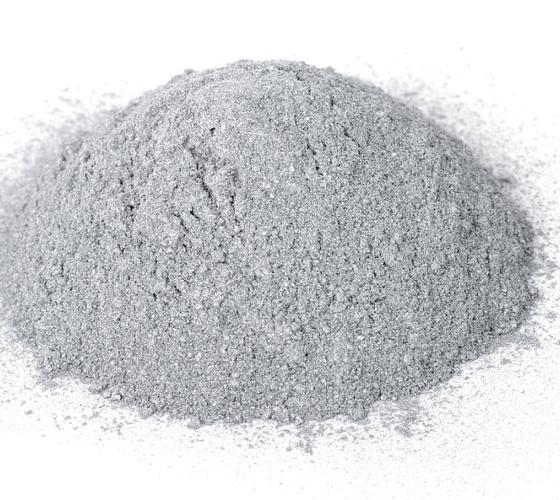1. Introduction
In the past 48 hours, global supply chain alerts have highlighted increased demand—and tighter export controls—for high-purity titanium metal powder used in aerospace 3D printing, particularly grades like Ti6Al4V (also known as Ti64). With defense and medical sectors ramping up production of lightweight components, knowing how to properly source, handle, and apply titanium powder has never been more critical.

Titanium powder isn’t just a niche lab curiosity—it’s a cornerstone material in modern manufacturing. But with dozens of variants like spherical titanium powder, HDH titanium powder, titanium nitride powder, and even titanium-coated diamond powder, choosing the right type can be overwhelming. This guide cuts through the noise with clear, step-by-step advice.
2. Understanding Titanium Powder Types and Their Uses

Not all titanium powders are created equal. The form, purity, and particle morphology dictate their suitability for specific applications.
2.1 Common Titanium Powder Variants
- Pure titanium powder: Used in chemical processing and biomedical implants due to its biocompatibility.
- Ti6Al4V powder (Ti64 powder): The most widely used titanium alloy powder for 3D printing aerospace and medical parts.
- Gas atomized titanium powder: Spherical particles ideal for smooth flow in additive manufacturing systems.
- HDH titanium powder: Made via hydride-dehydride process; irregular shape, lower cost, often used in pressing and sintering.
- Titanium dioxide (TiO2) powder and TiO2 nano powder: Primarily for pigments, sunscreens, and photocatalysis—not metallic applications.
- Titanium carbide powder, titanium nitride powder, titanium diboride (TiB2) powder: Hard ceramic additives for cutting tools and wear-resistant coatings.
- Titanium flash powder: A pyrotechnic mixture—highly reactive and not used in industrial manufacturing.
2.2 Key Applications
Titanium powder uses span aerospace (jet engines, airframes), medical (implants), automotive (lightweight parts), and energy (heat exchangers). For additive manufacturing, titanium powder for 3D printing must meet strict standards for oxygen content, particle size distribution, and sphericity.
3. How to Buy Titanium Powder: Supplier Selection and Pricing
Buying titanium powder requires more than just comparing titanium powder price per kg. Quality, certification, and consistency matter immensely—especially for critical applications.
3.1 Evaluating Titanium Powder Suppliers
Look for ISO-certified titanium powder suppliers with experience in your industry. Reputable vendors provide full material data sheets (MDS), including particle size analysis, Hall flow rate, and chemical composition. Avoid obscure sellers offering suspiciously low titanium metal powder price quotes—they may sell contaminated or mislabeled material.
Ask specifically whether the powder is gas atomized or HDH, and confirm if it’s suitable for your process (e.g., laser powder bed fusion).
3.2 Understanding Titanium Powder Price Factors
Titanium powder price varies widely based on grade, purity, and form. As of mid-2024:
- Pure titanium powder: $80–$150/kg
- Ti6Al4V powder price: $120–$250/kg
- 3D printing titanium powder price (spherical, gas atomized): Often exceeds $200/kg
Compare titanium powder cost against performance needs—cheaper HDH powder may suffice for non-critical sintered parts, but never for flight-certified components.
Also note: Ti powder price is generally quoted interchangeably with titanium powder price, but always confirm the exact alloy or compound.
4. Safe Handling and Storage of Titanium Powder
Titanium dust and fine metal powders can be flammable or even pyrophoric under certain conditions—especially nanopowders or freshly milled material.
4.1 Critical Safety Practices
- Store in sealed, inert-atmosphere containers (argon or nitrogen).
- Never expose fine titanium powder to open flames, sparks, or static electricity.
- Use explosion-proof equipment in handling areas.
- Wear appropriate PPE: N95 masks aren’t enough—use respirators rated for metal dust.
Note: Titanium flash powder is extremely hazardous and should only be handled by licensed professionals in controlled environments.
4.2 What to Do If Contaminated
If titanium powder contacts skin or eyes, rinse immediately with water. In case of inhalation, seek fresh air and medical attention. Keep Material Safety Data Sheets (MSDS) accessible at all times.
5. Common Mistakes to Avoid
- Confusing TiO2 powder with metallic titanium powder—TiO2 is an oxide, not a metal, and cannot be used in 3D printing or metallurgy.
- Assuming all ‘titanium powder for sale’ is suitable for additive manufacturing—only spherical, low-oxygen grades work reliably in AM systems.
- Ignoring compatibility with other powders: Mixing titanium powder with molybdenum powder or tungsten powder without proper testing can lead to unpredictable reactions during sintering.
6. Related Powders: When Titanium Isn’t Enough
Many advanced applications blend titanium with other high-performance powders:
- Molybdenum disulfide (MoS2) powder: Used as a dry lubricant; sometimes co-sprayed with titanium coatings.
- Tungsten carbide powder: Combined with titanium carbide for ultra-hard cutting tools.
- TZM powder (titanium-zirconium-molybdenum): A refractory alloy for extreme heat environments.
While these aren’t substitutes, understanding their roles helps in composite design. Always verify compatibility before mixing.
7. Conclusion
Whether you’re sourcing titanium powder for 3D printing, researching titanium alloy powder formulations, or evaluating titanium powder suppliers, prioritize safety, certification, and application-specific requirements. Don’t let misleading listings or vague titanium powder price quotes compromise your project. With the right knowledge—and caution—you can harness the full potential of this remarkable material.
Our Website founded on October 17, 2012, is a high-tech enterprise committed to the research and development, production, processing, sales and technical services of ceramic relative materials such as How. Our products includes but not limited to Boron Carbide Ceramic Products, Boron Nitride Ceramic Products, Silicon Carbide Ceramic Products, Silicon Nitride Ceramic Products, Zirconium Dioxide Ceramic Products, etc. If you are interested, please feel free to contact us.
